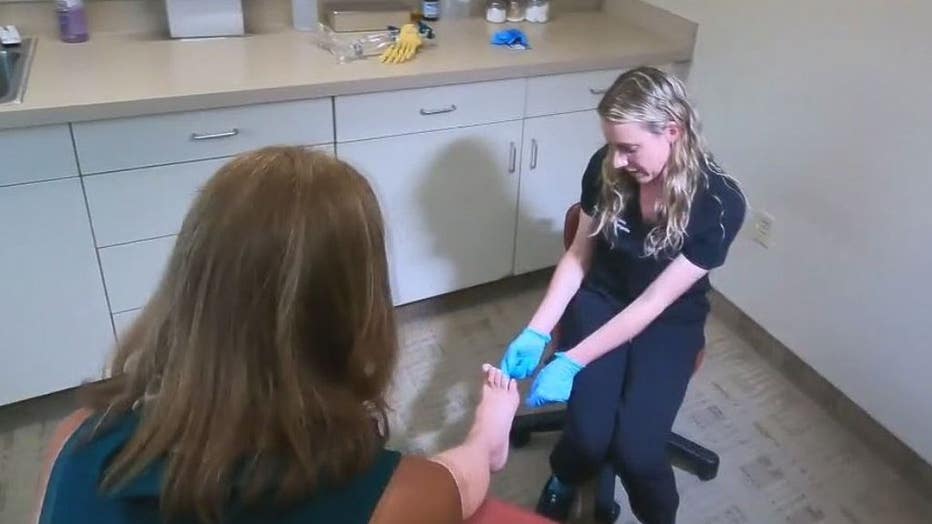Foot troubles and the agony of (de-feet); a doctor tells us what we're doing wrong
Shoe choices could make the difference for foot pain, doctor says
About 87 percent of Americans deal with foot problems. Whether for work or play, our feet are getting us there, and we might owe them a little more respect.
FOX 2 (WJBK) - If you don't deal with foot pain consider yourself lucky or maybe just smart with your shoe choices.
About 87 percent of Americans deal with foot problems. What are we doing wrong?
I was recently on a trip doing a lot of walking on cobblestone streets - and my feet seemed very unhappy - but when our feet fail us, who's really at fault?
Whether for work or play, our feet are getting us there, and we might owe them a little more respect.
"There's usually two of them and all of your weight is focused on both of them," said Dr. Kristen Patterson. "Throughout the day they do take a lot of abuse."
Patterson, a Corewell Health podiatrist, is the first foot doctor to analyze my feet. I've got the trifecta of foot troubles
"So you do have hammer toes, you do have a bunion, and this is called a tailor's bunion on the opposite side of the foot," Patterson said.
A bunion is a bony bump at the base of the toe. Shoes are probably to blame for all of my troubles.
You jam toes into narrow or tight shoes and they start to curl, that's how you get hammer toes.
Another common issue caused by our shoes - blisters.
Deena: "When you have a blister on your foot, are you allowed to pop it?"
"Ideally you shouldn't, for a few reasons," Patterson said. "The skin over the blister provides some protection from bacteria and infection," Patterson said. "And then sometimes we see when people pop them at home or wherever in a non-sterile way, they are introducing (a chance) for infection of the blister. Ideally, you should leave them."

If ill-fitting shoes are to blame for everything from blisters to bunions, what can we do better?
"You want a shoe that you can't bend in half or wring out like a rag," she said. "So if you take a shoe, and you try to spin it like a rag and if that shoe just folds over on itself, that's usually not supportive or not very good at all.
"You can also check the heel in the back of the shoe - if you can take your fingers and squeeze the heel, if it collapses in between your fingers, then usually, that's not good support for the heel."
How to avoid defeat, as you age, your feet may change, so have your feet measured - at the end of the day, preferably.
- Check the shape and the space in the shoe.
- Blend fashion and comfort. You want cushioning and arch support.
- Know that diabetes raises risks - poor circulation or nerve damage can lead to serious issues. That's why Dr. Patterson recommends anyone with diabetes see a foot doctor.
"Once you develop pain, especially chronic pain, or pain after an injury, you definitely should have that pain examined," she said. "And also have your foot shape, your foot type examined, to figure out what improvements can be made."
Some foot issues require surgery, but others can be fixed with good shoes, there are exercises, stretches, pads and products where you can stick your toes in and maybe straighten them out a little bit.
Also, there are orthotics - the doctor says having a special molded insert for your foot can turn a bad pair of shoes into good ones.

Dr. Kristen Patterson from Corewell Health, gives a foot exam.

